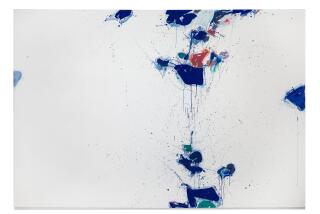He Finds High Art at Low Level : Painting: China historian James Cahill, who’ll speak at the Bowers Museum today, has spent a career studying the works that appealed to the masses, if not to the experts.
- Share via
SANTA ANA — Throughout his distinguished career as a historian of Chinese art, James Cahill, professor emeritus at UC Berkeley, has made a point of looking into “low class” aspects of art production that Chinese commentators don’t deign to recognize.
Best known for his classic text, “Chinese Painting” (Skira, 1960), Cahill has broken new ground in the hidebound world of Chinese art scholarship with such publications as “The Painter’s Practice: How Artists Lived and Worked in Traditional China” (Columbia University Press, 1993). A member of the pioneering Chinese Archeology Delegation to China in 1973, he has returned many times since to lecture and research painting collections.
At 2 p.m. today at the Bowers Museum, Cahill will speak on “A Neglected Current in Mid-Ch’ing Painting: Figure Compositions by Urban-Professional Masters”--a scholarly title that belies the down-to-Earth appeal of these 17th- and 18th-Century images made in the thriving eastern cities of Yangchou, Nanking, Wu-hsi and Suchou.
The most exalted artists of imperial China were the highly refined literati, painters of spare, allusive landscapes for their intellectual peers. But ordinary Chinese people were enthralled by the works of academic painters who spiced up their imagery with exotic and tantalizing European illusionistic techniques.
*
Engravings and illustrated books brought to China by Jesuit missionaries introduced these techniques, which were copied by urban Chinese artists to make their works more accessible to viewers, Cahill explained in a recent phone conversation.
Unlike the flat, stylized figures in traditional Chinese paintings, the Westernized imagery was “almost palpable,” Cahill said. “They made their pictures very spacious, so people felt they could enter into them. . . . The Chinese would say, ‘It’s just like an image in the mirror.’ ”
The Jesuits surely never dreamed that their religious imagery would provide artists with ways of intensifying the physical allure of mei-jen (“beautiful women”) paintings, a traditional genre.
“Some of the best things done by these artists are erotic paintings,” Cahill said. “There’s nothing incompatible between eroticism and artistic quality. Sometimes one reads that they were ‘pillow books,’ meant to instruct brides [in sexual techniques]. That’s another myth, probably made up by [art] dealers. They were turn-ons, as [similar images] were elsewhere.”
Other paintings, generally purchased as gifts or to mark a holiday, show scenes of family life and celebration. Such was the novelty value of the illusionistic style that Manchu emperors employed artists to paint lifelike portraits of members of the court and their pets.
*
Despite court patronage, most of the Western-influenced paintings of this type are either anonymous or have been falsely attributed to great masters. The misattributions are a “very Chinese” state of affairs, Cahill said. “If you have a good painting in China that’s by nobody, you attach a great name to it so you can sell it for more money.”
Rigid hierarchies within the Chinese art establishment--which routinely have been adopted by scholars of other nationalities--account for the artists’ fall into obscurity.
“Chinese critics and painters all belong to the literati class, a very small segment that makes all the judgments,” Cahill explained. “We have accepted their judgments too much. Much of my work is trying to break through all these biases.”
One result of his research, he said, is that “all my colleagues in social history [of art] and women’s studies go crazy when they see these paintings. The paintings are mostly closely locked into social observances [and] I’ve kind of decoded them.”
*
“A Neglected Current in Mid-Ch’ing Painting: Figure Compositions by Urban-Professional Masters,” a lecture by UC Berkeley Professor James Cahill at 2 p.m. today in the Gumbiner/FHP Conference Center at the Bowers Museum, 2002 N. Main St., Santa Ana. Presented by the museum’s Chinese Cultural Arts Council. Free with museum admission: $4.50, adults; $3, seniors and students; $1.50, children 5-12, free for children under 5. (714) 567-3600.
More to Read
The biggest entertainment stories
Get our big stories about Hollywood, film, television, music, arts, culture and more right in your inbox as soon as they publish.
You may occasionally receive promotional content from the Los Angeles Times.










